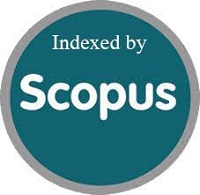Memahami Mood dalam Konteks Indonesia: Adaptasi dan Uji Validitas Four Dimensions Mood Scale
DOI:
https://doi.org/10.15408/jp3i.v5i2.10790Keywords:
Emotion, Mood, Core affect, Validity, ReliabilityAbstract
Mood is a psychological condition that involves emotion without any existence emotional object. Although it exists as an abstract psychological variable, the contribution of emotion towards human behavior is massively important. Many studies related to emotion and human behavior have shown that individual mood (positive or negative) will have different behavioral consequences. In order to understand mood comprehensively in Indonesian context, we need a valid and reliable measurement scale. The purpose of this study is to investigate the validity and reliability of Four Dimensions Mood Scale (FDMS) as a psychological tool to classify mood condition into four primary dimensions, positive energy; tiredness; negative activation and relaxation. Finally, author hopes that this study will give an empirical contribution so that FDMS is able to use in Indonesian context.
Mood adalah kondisi psikologis yang melibatkan emosi tanpa ada objek emosi yang terdeteksi secara jelas. Meskipun mood terbentuk sebagai variabel psikologi yang abstrak, kontribusi emosi terhadap perilaku manusia tidak dapat dipandang sebelah mata. Berbagai studi terkait emosi dan perilaku manusia menunjukkan bahwa mood individu (positif atau negatif) akan memiliki konsekuensi perilaku yang berbeda. Guna memahami mood secara komprehensif dalam komteks Indonesia, kita membutuhkan sebuah alat ukur yang valid dan reliabel. Tujuan dari studi ini adalah melakukan validasi dan uji reliabilitas terhadap Four Dimensions Mood Scale (FDMS) sebagai sebuah alat ukur untuk mengklasifikasi kondisi mood ke dalam empat dimensi utama, positive energy; tiredness; negative activation dan relaxation. Penulis berharap studi ini akan memberikan kontribusi teoritis dimana FDMS akan dapat digunakan dalam konteks Indonesia.
References
Anastasi, A., & Urbina, S. (1997). Psychological testing. 7th.ed. NJ: Prentice Hall International, Inc.
Barret, L. F. (1998). Discrete emotions or dimensions? The role of valence focus and arousal focus. Cognition and Emotion, 12(4), 579-599.
Batra, R., & Stayman, D. M. (1990). The role of mood in advertising effectiveness. Journal of Consumer Research, 17(2), 203-214.
Beaton, D. E., Bombardier, C., Guillemin, F., & Ferraz, B. (2000). Guidelines for the process of cross-cultural adaptation of self-report measures. Spine, 25(24), 3186-3191.
Burke, M. J., Brief, A. P., George, J. M., Roberson, L., & Jane, W. (1989). Measuring affect at work: Confirmatory analyses of competing mood structures with conceptual linkage to cortical regulatory system. Journal of Personality and Social Psychology, 57(6), 1091-1102.
Chadha, N. K. (2009). Applied psychometry. Sage Publication.
Cohen, R. J., & Swerdlik, M. E. (2010). Psychological Testing and Assessment: An Introduction to Tests and Measurement. 7th.ed. McGraw-Hill.
Cozby, P. C., & Bates, S. C. (2012). Methods in behavioral research. 11th.ed. McGraw-Hill.
Crocker, L., & Algina, J. (1986). Introduction to classical and modern test theory. Harcourt Brace Jovanovich College Publishers.
Ekman, P. (1992). An argument for basic emotion. Cognition and Emotion, 6(3/4), 169-200.
Fedorikhin, A., & Cole, C. A. (2004). Mood effects on attitudes, perceived risk and choice: Moderators and mediators. Journal of Consumer Psychology, 14(1&2), 2-12.
Fiske, S. T., & Taylor, S. E. (2008). Social cognition: From brains to culture. NY: McGraw-Hill.
George, J. M. (1998). Mood at work: Implications for helping customers. The Journal of Personal Selling and Sales Management, 18(3), 23-30.
Gravetter, F. J., & Wallnau, L. B. (2004). Statistics for the behavioral sciences. 6th.ed. USA: Thomson Learning, Inc.
Howell, D. C. (2010). Statistical methods for psychology. 7th.ed. USA: Wadsworth, Cengage Learning.
Huelsman, T. J., Nemanick, Jr, R. C., & Munz, D. C. (1998). Scales to measure four dimensions of dispositional mood: Positive energy, tiredness, negative activation, and relaxation. Educational and Psychological Measurement, 58(5), 804-819.
Hooper, D., Coughlan, J., & Mullen, M. R. (2008). Structural equation modelling: Guidelines for determining model fit. The Electronic Journal of Business Research Methods, 6(1), 53-60.
Isen, A. M., & Simmonds, S. F. (1978). The effects of feeling good on a helping task that is incompatible with good mood. Social Psychology, 41(4), 346-349.
Jackson, D. L., Gillaspy, Jr, J. A., Purc-Stephenson, R. (2009). Reporting practices in confirmatory factor analysis: An overview and some recomendations. Psychological Method, 14(1), 6-23.
Kline, R. B. (2011). Principles and practice of structural equation modeling. The Guilford Press.
Lee, A. Y., & Sternthal, B. (1999). The effects of positive mood on memory. Journal of Consumer Research, 26(2), 115-127.
Leung, D. Y. P., Wong, E. M. L., Chan, S. S. C., & Lam, T. H. (2013). Psychometric properties of the big five inventory in a Chinese sample of smokers receiving cessation treatment: A validation study. Journal of Nursing Education and Practice, 3(6), 1-10.
Miller, C. (2009). Social psychology, mood, and helping: Mixed results for Virtue Ethics. The Journal of Ethics, 13(2/3), 145-173.
Ross, R. T. (1938). A statistic for circular scales. Journal of Education Psychology, 29, 384-389.
Russel, J. A. (1980). A circumplex model of affect. Journal of Personality and Social Psychology, 39(6), 1161-1178.
Russel, J. A. (2003). Core affect and the psychological construction of emotion. Psychological Review, 110(1), 145-172.
Russel, J. A. (2009). Emotion, core affect, and psychological construction. Cognition and Emotion, 23(7), 1259-1283.
Steiger, J. H. (2007). Understanding the limitations of global fit assessment in structural equation modeling. Personality and Individual Differences, 42(5), 893-898.
Swinyard, W. R. (1993). The effects of mood, involvement, and quality of store experience on shopping intentions. Journal of Consumer Research, 20(2), 271-280.
Syarifah, I. N. (2015). Adaptasi dan validasi skala iklim organisasi kreatif. Jurnal Pengukuran Psikologi dan Pendidikan Indonesia, 4(4), 1281-1298.
Tavakol, M., & Dennick, R. (2011). Making sense of Cronbach’s alpha. International Journal of Medical Education, 2, 53-55.
Watson, D., Clark, L. A., & Tellegen, A. (1988). Development and validation of brief measures of positive and negative affect: The PANAS scale. Journal of Personality and Social Psychology, 54(6), 1063-1070.



